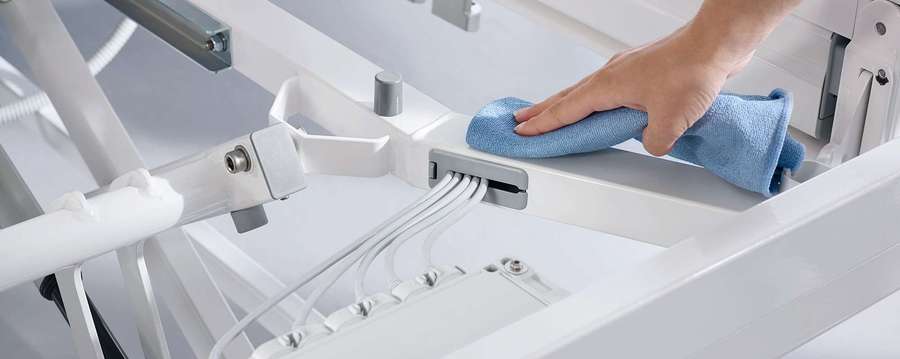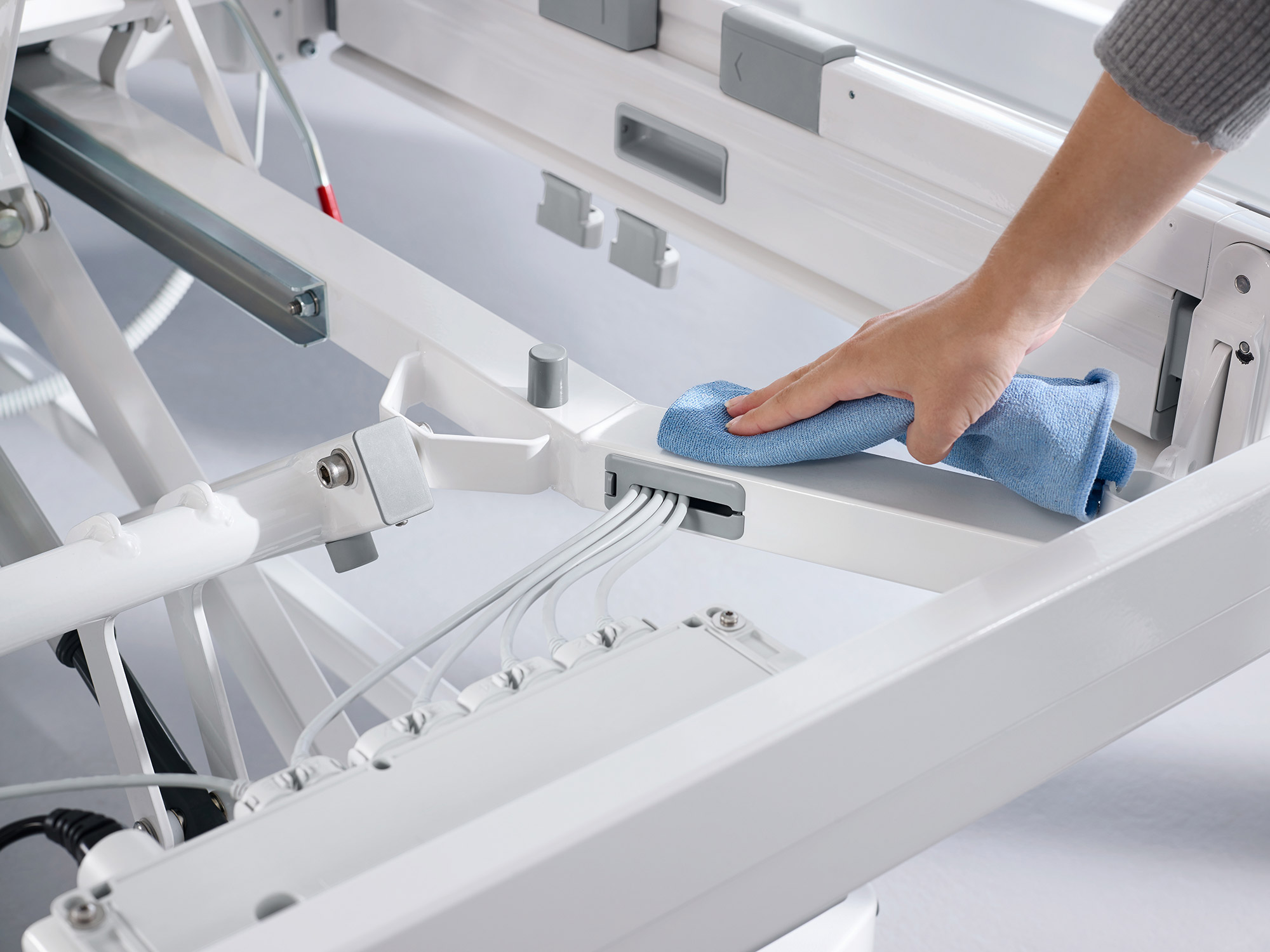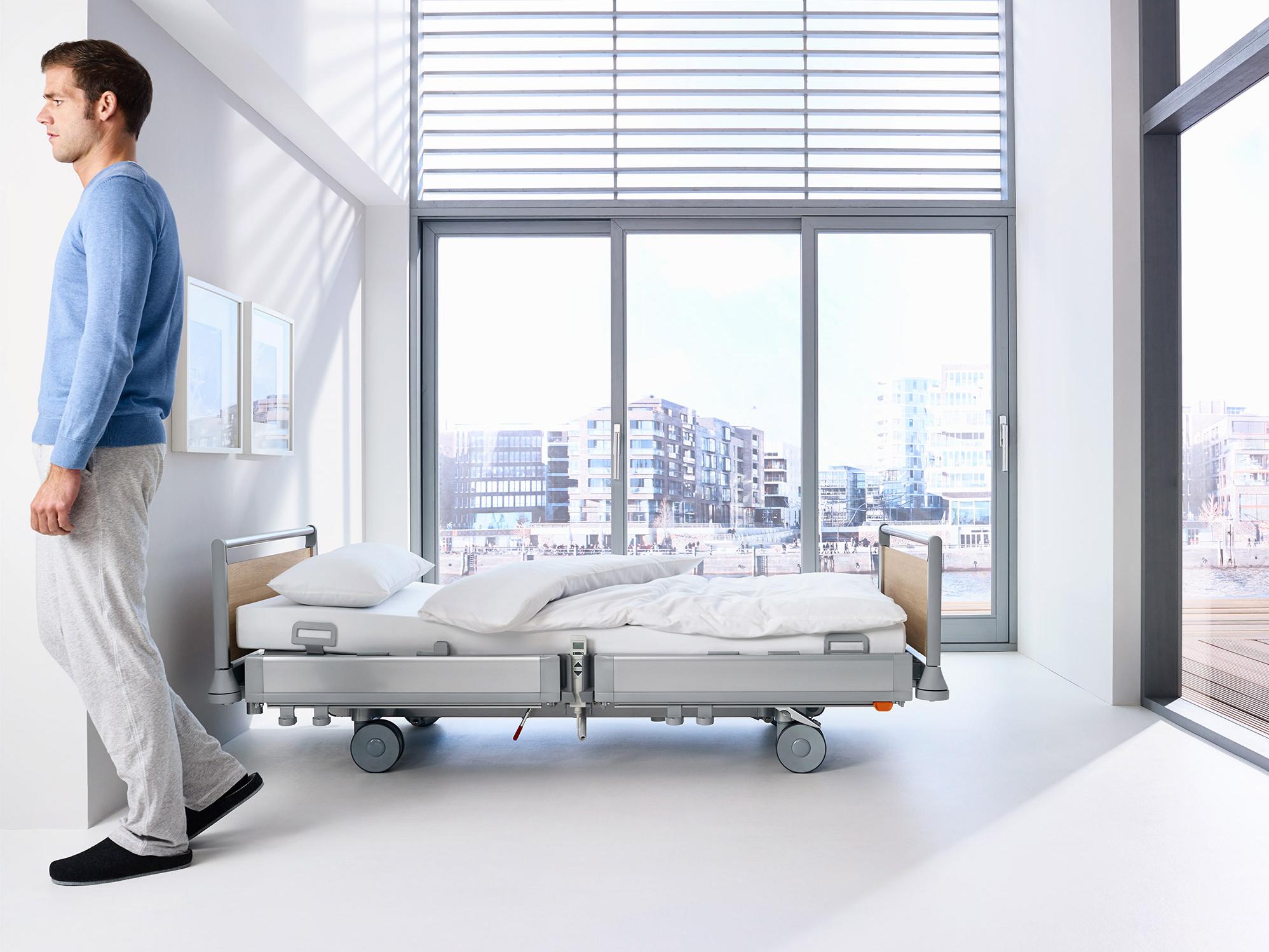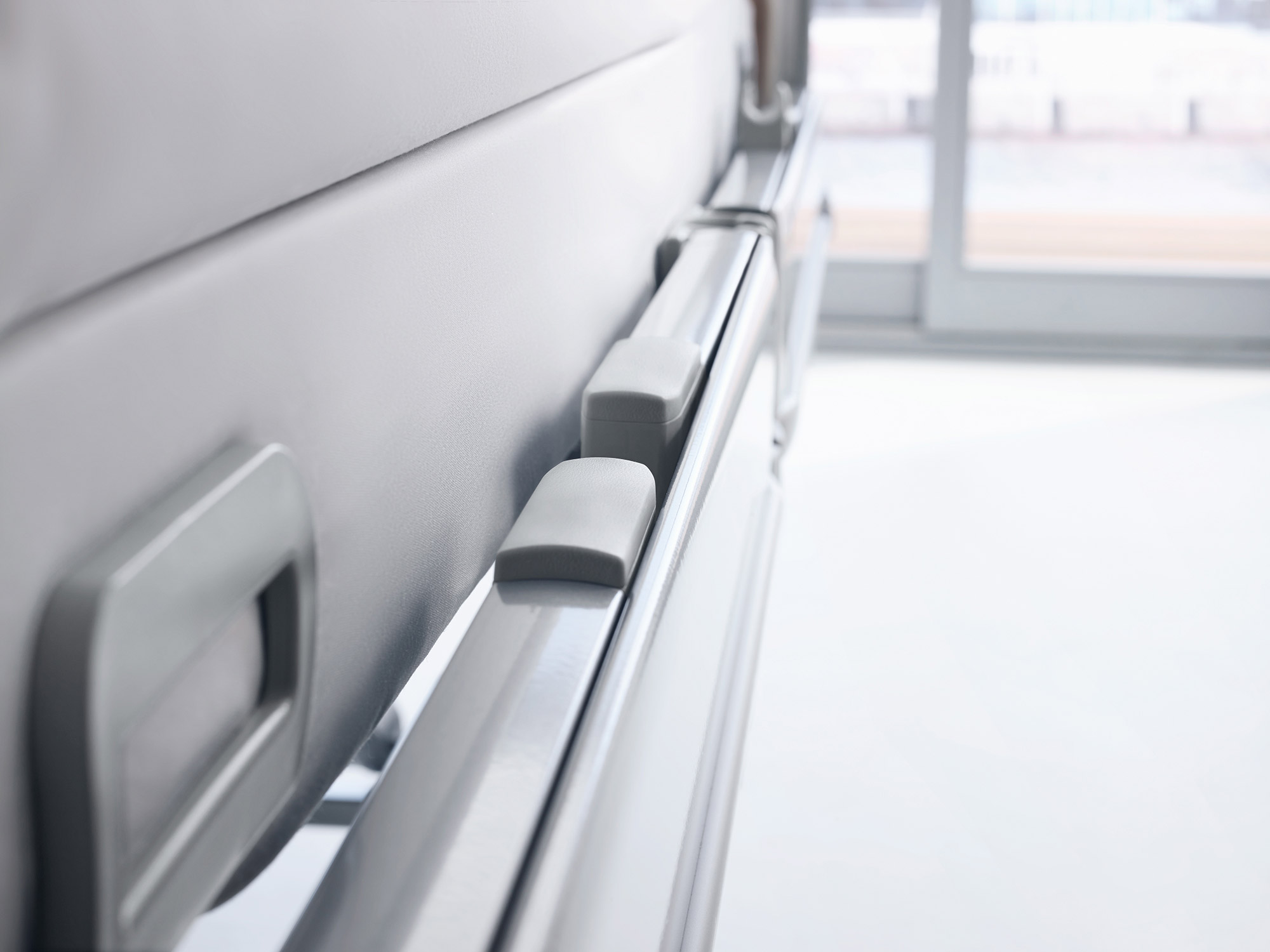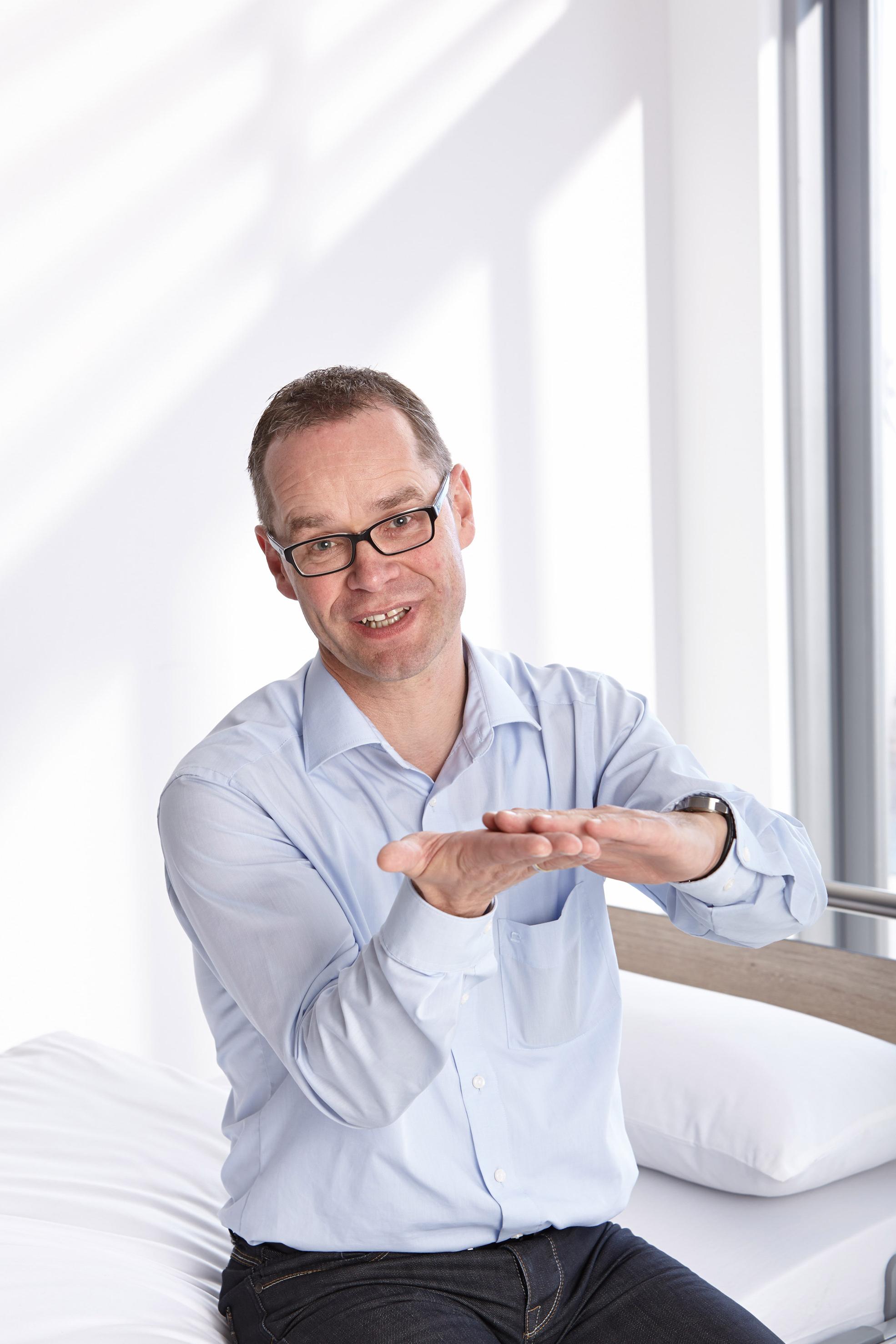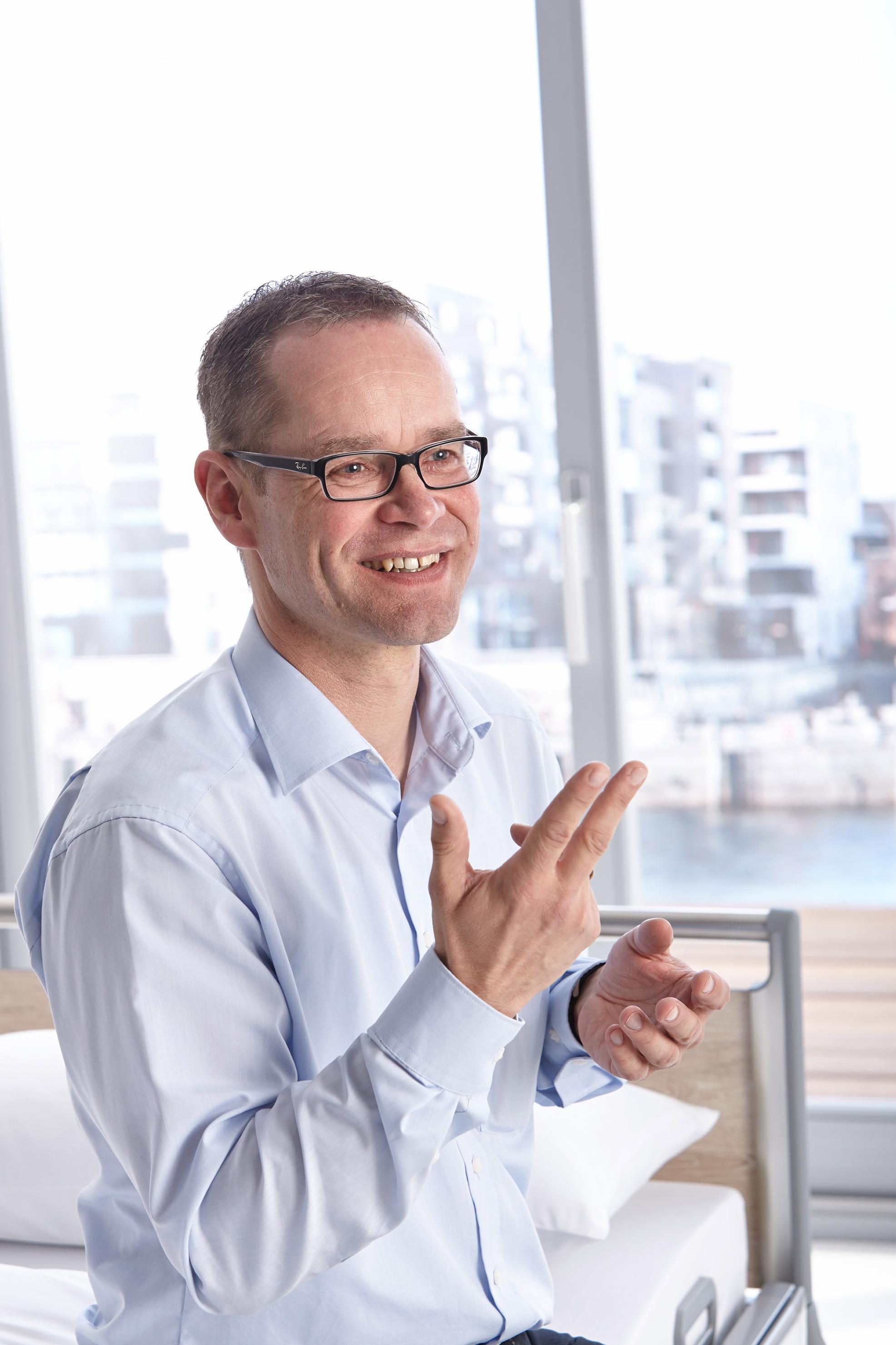
Simply asked Puro
Lars Schröder in an interview with Kirsten Kaawar on the new Stiegelmeyer hospital bed "Puro"
Mr. Schröder, as Product Manager at Stiegelmeyer you have been working on the development of new, innovative products for the hospital sector for many years. What where the most important challenges in developing a new hospital bed?
With the constant reductions in personnel and financial resources, it was important to develop a bed that can be operated quickly and simply and ensures value preservation. Another objective was to create good hygienic conditions. We succeeded in achieving this in the Puro.
What is important when developing a new hospital bed with a new design?
The hospital bed is more than just a medical product; it also needs to communicate comfort. The technical functionalities of the Puro were integrated particularly ‘elegantly’ into the bed design.
Hygiene plays an important role in hospitals. Was this taken into account in the constructional development?
Yes, all the components are designed to be easy to clean: The Puro has large areas that are easy to reach – niches were avoided for the most part. A particular highlight on the Puro is that we are the only manufacturer of hospital beds to integrate the bed cables into the frame. Automatic reprocessing is also no problem with the Puro.
Care work has changed a lot over recent years. Were customer requirements considered when developing the new bed?
Yes, both the sales department at Stiegelmeyer, but also the service department receive a lot of information every day regarding user satisfaction with out products. In addition we also discussed the individual development steps with customers before further optimisation.
Care staff is always short of time. How can you support everyday work at a hospital with a hospital bed?
Digital integration has already revolutionised many areas of life – why should the benefits of digital technology not be included in a hospital bed? Exactly this is possible with the digital assistance system on our Puro. We call this electronic aid ‘e-help’.
Can you give us an example of that?
For example, sometimes a carer is looking after one patient in one room while a patient in the next room leaves or falls out of their bed. This is reported by the ‘Out-of-Bed-system’ via the call system in the corridor or in the nurses’ room.
Does the Puro have other functions that will win over patients and care staff?
The fact that a bed includes many functions does not mean that these are simply and easily understood. We considered this issue in the operating concept for the handset on the Puro. With the reduction to only three buttons in combination with a large, illuminated display, we enable the staff and patients to operate the bed intuitively. Technicians can also carry out a direct error analysis using the handset.
The safety sides are a central element on a hospital bed. How does Stiegelmeyer tackle this topic?
As with all the functions on our new Puro, the aspects ‘simple use’ and a ‘high level of safety’ were given priority. The safety sides need to be self-explanatory and need to function in the narrowest spaces. The use of Multiflex+-safety sides is oriented towards the needs of the patient: from use as a mobilisation aid through to protection along the entire length of the bed.
The core theme with the Puro is ‘more than just a bed’. What does this mean?
Hospital beds need to be designed for efficient and long-term use in the hospital. That cannot be guaranteed by product quality alone. That is why we offer useful services relating to the bed that ensure good value preservation. We advise our customers individually in order to integrate the bed optimally into the procedures at each establishment. We also offer comprehensive service packages from inspection to full maintenance and customer-specific solutions.
Our thanks go to Lars Schröder for this informative conversation and we wish him every success for the product launch of the new Puro.

